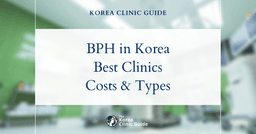BPH (Benign Prostatic Hypertrophy)
Description
Benign Prostatic Hypertrophy (BPH), also known as benign prostatic hyperplasia, is a non-cancerous enlargement of the prostate gland that typically affects aging men. The prostate, which is a small gland located below the bladder and surrounding the urethra, increases in size in response to hormonal changes that occur with advancing age. The enlarged prostate can impinge on the urethra, causing urinary symptoms such as a frequent need to urinate, difficulty starting and stopping urination, weak urine stream, and inability to completely empty the bladder. Procedural management of BPH often begins with a clinical assessment, including a review of symptoms, digital rectal examination, and measurement of prostate-specific antigen (PSA) levels to rule out prostate cancer. When lifestyle modifications and medical therapy—such as alpha-blockers or 5-alpha reductase inhibitors—are insufficient, surgical interventions may be considered. One common procedure is Transurethral Resection of the Prostate (TURP), where a resectoscope is inserted through the urethra to trim away excess prostate tissue. Alternatively, newer, less invasive techniques such as laser therapy, transurethral microwave therapy (TUMT), or UroLift (prostatic urethral lift) can be employed to relieve symptoms. Each treatment option carries its risks and benefits, which should be discussed between the patient and healthcare provider to determine the most appropriate course of action.
Search
Categories
Related Posts




Top BPH (Benign Prostatic Hypertrophy) Clinics
TrueMan Medical Center - Myeongdong
Myeongdong Station
Free consultation from the clinic
Welcome to TrueMan Medical Center in Myeongdong, a leading clinic specializing in male health and wellness. Here, you can access a variety of advanced treatments in a private and professional environment. Premature Ejaculation Behavioral Therapy: Tailored exercises and counseling to help you gain better control during intercourse. This integrated approach aims to manage psychological elements affecting performance. Pharmacological Treatment: Customized medication plans to delay ejaculation and enhance satisfaction. These medications are prescribed based on individual evaluations. Penis Enlargement Dermal Fillers: Injections that add volume and enhance the appearance of the penis. This minimally invasive procedure provides quick results with minimal recovery time. Surgical Enlargement: Comprehensive surgical techniques to increase penis length and girth. These procedures are performed by expert surgeons with extensive experience. Erectile Dysfunction Medication Management: Use of FDA-approved drugs like Viagra and Cialis to improve erectile function. These medications are administered under medical supervision for maximum efficacy. Shockwave Therapy: Non-invasive treatment using low-intensity shockwaves to stimulate blood flow and improve erections. This therapy is suitable for men seeking a non-pharmaceutical option. Benign Prostatic Hyperplasia (BPH) Medication Therapy: Prescription drugs aimed at reducing prostate size and alleviating urinary symptoms. Medications are customized to individual needs and conditions. Minimally Invasive Surgery: Procedures like TURP (Transurethral Resection of the Prostate) to relieve severe BPH symptoms. These surgeries are performed using advanced equipment for optimal outcomes.
learn more
GoldMan Urology Clinic - Incheon
Incheon Terminal Station
Free consultation from the clinic
GoldMan Urology Clinic - Incheon is a renowned clinic offering advanced urological treatments with a patient-oriented approach. Penile Augmentation: Direct Glans Augmentation: This procedure involves enhancing the size and shape of the glans penis using specialised techniques. Artificial Derma: Utilizes a synthetic dermal graft to enhance penile dimensions. Autologous Derma: Involves using the patient's own dermal tissue for penile enlargement, ensuring biocompatibility and natural results. Silicone Implant: Silicone implants are surgically inserted to increase penile size and improve appearance. Injecting Fillers: Non-surgical procedure using dermal fillers to enhance the girth and contour of the penis. Non-scalpel Vasectomy: This is a minimally invasive procedure offering a permanent method of contraception without the need for incisions. It reduces the risk of complications and allows for a quicker recovery compared to traditional vasectomy methods. Laser Circumcision: A quick and precise circumcision method using laser technology to remove the foreskin. This technique minimizes bleeding, reduces pain, and accelerates the healing process. Benign Prostate Hyperplasia (BPH): Specialized treatments aimed at alleviating symptoms of benign prostate enlargement. These treatments can range from medication management to advanced surgical procedures depending on the severity of the condition. GoldMan Urology Clinic is dedicated to providing state-of-the-art procedures with a focus on patient safety, comfort, and satisfaction.
learn more


